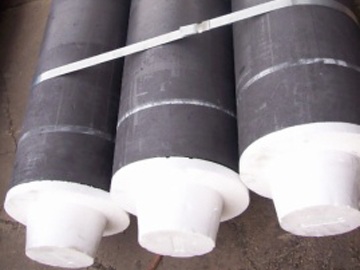
Graphite is a crystal. Graphite is a kind of transition crystal between atomic crystal, metal crystal and molecular crystal.
In the crystal, the covalent bond is formed by SP2 hybridization between the carbon atoms in the same layer. Each carbon atom is connected with the other three carbon atoms. Six carbon atoms form regular hexagonal rings in the same plane and stretch to form a lamellar structure.
Carbon atoms in the same plane each have a p orbital, which overlap each other to form an delocalized π bond. Electrons can move freely in the lattice and can be excited, so graphite has metallic luster and can conduct electricity and heat. Due to the large distance between the layers and the small bonding force (van der Waals force), each layer can slide, so the density of graphite is smaller than that of diamond, which is soft and greasy.
The distance between each grid layer of graphite is 3.40 Å, which is combined by van der Waals force. That is to say, the layers belong to molecular crystals, and the spacing of carbon atoms in the same grid layer is 1.42 Å. Because the bonding between carbon atoms in the same plane layer is very strong, it is very difficult to destroy, so the melting point of graphite is also very high, and its chemical properties are stable.
In view of its special bonding mode, it can not be regarded as single crystal or polycrystalline. Now it is generally considered that graphite is a kind of mixed crystal.

